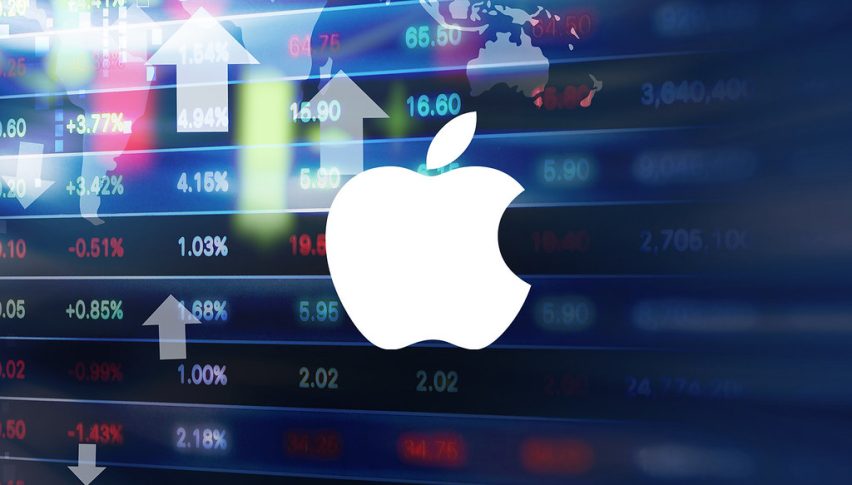Apple Stock AAPL Slides to $243 as Tariffs and Lukewarm iPhone Launch Weigh
Apple shares came under renewed pressure this week as U.S.–China trade tensions and an underwhelming iPhone 17 launch weighed heavily on inv

Quick overview
- Apple shares fell sharply this week due to escalating U.S.–China trade tensions and a disappointing iPhone 17 launch.
- The stock dropped to $245 after new tariffs on Chinese imports were announced, leading to a broader tech selloff.
- The iPhone 17 launch failed to excite investors, with updates seen as evolutionary rather than groundbreaking.
- Analysts caution that Apple's near-term outlook is uncertain, hinging on trade policy developments and the need for a new growth catalyst.
Live AAPL Chart
[[AAPL-graph]]Apple shares came under renewed pressure this week as U.S.–China trade tensions and an underwhelming iPhone 17 launch weighed heavily on investor confidence.
Tariff Tensions Spark a Selloff
Apple’s stock (NASDAQ: AAPL) tumbled sharply this week, dropping to $245 after failing to sustain momentum above December 2024’s high of $260. The decline came in the wake of new U.S. tariffs on Chinese imports announced by President Donald Trump, escalating trade friction between the two largest economies. The move rattled global markets, with technology shares taking the hardest hit.
Trump’s announcement, which included a threat of a “massive increase” in tariffs and the possible cancellation of an upcoming meeting with Chinese President Xi Jinping, spooked investors. The rhetoric centered on China’s “unfair trade practices” and new export restrictions on rare earth minerals — critical materials for manufacturing semiconductors and electronic components. As a result, the Nasdaq Composite fell 2.4% on the day, while Apple slid more than 4% including the after hours decline, leading the broader tech selloff.
APPL Chart Weekly – Failing at $260 Resistance
Apple’s exposure to China remains a major vulnerability, with much of its manufacturing and supply chain deeply entrenched there. The fear that tariffs could significantly inflate production costs triggered a wave of profit-taking, driving AAPL nearly 5% lower for the week and forming a bearish engulfing candlestick on the weekly chart — a sign of further weakness ahead.
The iPhone 17 Launch Fails to Excite
Adding to the pressure, Apple’s highly anticipated “Awe Dropping” product event in September failed to meet market expectations. The company unveiled the iPhone 17 and iPhone 17 Air, alongside new iterations of the Apple Watch and AirPods. While the presentation showcased refined design and improved battery performance, analysts and investors largely viewed the updates as evolutionary rather than groundbreaking.
Apple’s share price initially spiked during the event but quickly reversed, ending the session lower for a second straight day and sliding further in after-hours trading. Analysts noted that while Apple continues to deliver steady hardware innovation, the lack of a major technological leap — such as a new AI-driven feature or hardware ecosystem expansion — left investors wanting more.
Market Outlook and Investor Sentiment
The confluence of trade policy uncertainty and lackluster product enthusiasm has created a challenging environment for Apple. While the company remains fundamentally strong, with a loyal customer base and robust balance sheet, its near-term trajectory will depend on how the trade dispute unfolds and whether supply chain disruptions intensify.
Many analysts believe Apple’s long-term outlook remains intact but caution that ongoing volatility could persist through year-end. A rebound may require either clarity on U.S.–China trade policy or a fresh catalyst — potentially linked to AI integration or expanded services growth — to reignite investor optimism.
Conclusion: Apple’s Balancing Act
Apple’s latest stumble highlights its delicate balance between geopolitical exposure and product innovation. The company’s dependence on Chinese manufacturing and incremental hardware updates have left its stock vulnerable to external shocks. Until Apple can present a new growth narrative or global trade tensions ease, AAPL may continue to trade defensively — consolidating below $250 as investors wait for a clearer signal of recovery.
- Check out our free forex signals
- Follow the top economic events on FX Leaders economic calendar
- Trade better, discover more Forex Trading Strategies
- Open a FREE Trading Account




